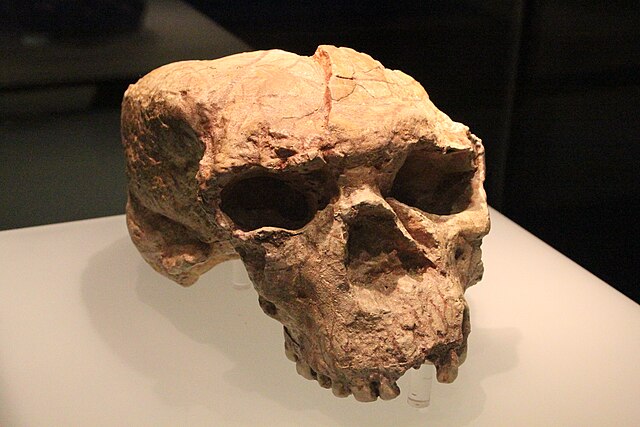Top Qs
Timeline
Chat
Perspective
Yunxian Man
Hominid skull fossil from Yunxian, China From Wikipedia, the free encyclopedia
Remove ads
Yunxian Man (Chinese: 郧县人; pinyin: Yúnxiàn rén) is a set of three hominid skull fossils discovered at the Xuetangliangzi site (学堂梁子遗址; Xuétángliángzǐ Yízhǐ) in Yunyang district, Hubei, China.[1][2][3][4] Two skulls were discovered, in 1989 and 1990, followed by a third in 2022.[1][4] The first two were described as "crushed and distorted," but "relatively complete," and compared to Homo erectus or early Homo sapiens.[1] These were given collection numbers EV 9001 and EV 9002 and are sometimes referred to as "Yunxian 1" and "Yunxian 2".[5] The fossils were excavated by the Institute for Cultural Objects and Archeology of Hubei Province, the Yunyang Regional Museum (now the Shiyan City Museum), and the Yun District Museum.[4]


In June 2001, the State Council designated the Xuetangliangzi site as a major cultural heritage site under national-level protection, as part of the fifth batch of additions to the list.[4]
In late 2022, a third skull, 35 meters from the discovery site of the two original skulls, was discovered and designated "Yunxian 3".,[6] and was discovered "in good condition."[6]
The Xuetangliangzi paleontological site is at the mouth of the Quyuan River (曲远河; Qūyuǎn Hé), where it flows into the Han River, so it has also been called the Quyuan River site.[7]
In 2025, a reconstruction removing much of the distortion led a team of researchers to believe the fossils are ancestral relatives of Denisovans.[8]
Remove ads
Scholarly analysis
The first two skulls bear similarities to Dali Man, but are significantly older.[9][10] Adjacent animal fossils allowed their age to be narrowed down to 600,000 to 400,000 years before present.[11] Some sources have described the specimens as Homo erectus, including a 3D virtual imaging analysis in 2010.[12] However, scholars are still divided, with some suggesting that it could be a more modern species or a mix with Homo sapiens.[5][6]
The paleoanthropologist Chris Stringer has suggested that Yunxian Man could be Homo heidelbergensis, which may thus have originated in Asia, though Chinese scholars dispute this classification.[9] In 2012, Stringer speculated that Yunxian Man could be a Denisovan ancestor.[10] In a 2016 article in Scientific American, Stringer called for better access to Chinese fossil specimens such as Yunxian Man and Dali Man, such as by replicas or CT scans.[9] In 2025, a team co-led by Stringer created a reconstruction of Yunxian 2 removing much of the deformation, which led them to conclude that it was an early relative of the Denisovans; more closely related to them than it was to other known members of Homo.[8][13]
Remove ads
References
External links
Wikiwand - on
Seamless Wikipedia browsing. On steroids.
Remove ads
